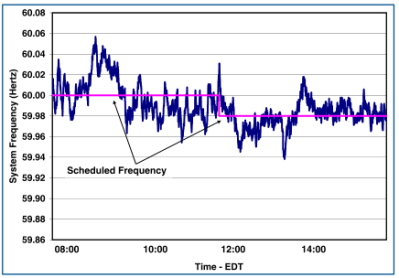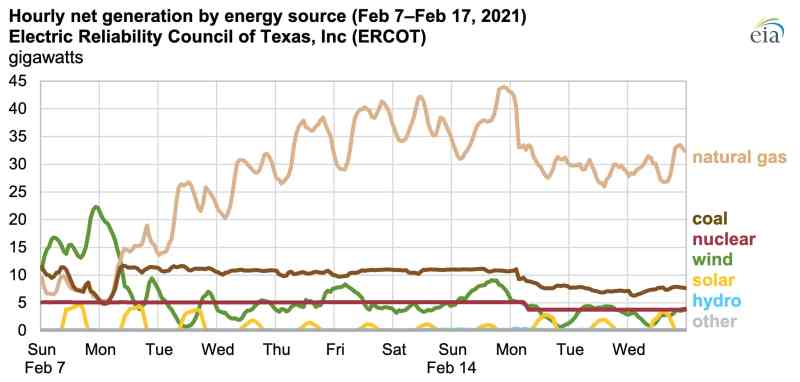
The grid failure in 2003 which reverted much of the eastern US and Canada back to a pre-electrification era may be rather memorable, yet it was not the first time that a national, or even international power grid failed. Nor is it likely that it will be the last. In August of 2023 we mark the 20th anniversary of this blackout which left many people without electricity for up to three days, while costing dozens of people their lives. This raises the question of what lessons we learned from this event since then.
Although damage to transmission lines and related infrastructure is a big cause of power outages – especially in countries where overhead wiring is the norm – the most serious blackouts involve the large-scale desynchronization of the grid, to the point where generators shutdown to protect themselves. Bringing the grid back from such a complete blackout can take hours to days, as sections of the grid are reconnected after a cascade scenario as seen with the 2003 blackout, or the rather similar 1965 blackout which affected nearly the same region.
With how much more modern society relies today on constant access to electrical power than it did twenty, let alone fifty-eight years ago, exactly how afraid should we be of another, possibly worse blackout?
Anatomy Of A Blackout

In the most simple terms, a grid blackout (‘power outage’) occurs when one or more grid parameters venture outside of safe operating limits, causing protections to engage. Here it’s also important to distinguish between a localized blackout and a cascade event, as was the case in 2003. In the former case something like overhead wiring may short due to a falling tree, causing fuses to trip and disabling that part of the grid until repairs can be made. This is similar to how a fusebox in a house will trip, whether due to a short or overload situation.
To go from this type of annoyance to a full-blown blackout with cascade failure, these protections have to fail for some reason, which will allow voltage and load swings to propagate across the network, causing more and more transmission lines and generators to either trip into safety mode or fail catastrophically. In the case of the 1965 northeast blackout, the start of the cascade was an issue with a protective relay on a transmission line at the Sir Adam Beck Hydroelectric Power Station No. 2 in Queenston, Ontario.
Due to this relay having been programmed incorrectly, it tripped when the external load increased, which led to the transmission line to Ontario being cut. The surge of power overloaded successive other transmission lines, each of which tripped and worsened the cascade failure. Along with a number of power stations, the North-Eastern grid effectively broke into a number of islands, with only some being powered due to safeties kicking in on time. Despite the 1960s US not being as reliant on electrical power as today, it did have a significant impact on the populace.
A number of more limited blackouts occurred in the New York City region since then, with the 1977 NYC blackout being highly notable. This blackout started with a lightning strike on a substation that tripped two circuit breakers, with equipment issues preventing the transmission line to recover and resulting in additional transmission lines to trip. The 2019 Manhattan blackout was very similar, but remained limited to an even smaller area after an explosion took out a substation.
Staying In Sync
After previous larger and smaller blackouts, one might get the impression that the North-American grid was getting more and more reliable, with any issues quickly being localized and prevented from spreading. This was what made the 2003 blackout such a memorable event, as not only was it on-par with the 1965 blackout, it happened in an era where reliance on continuous electrical power had become a fact of life. The final report by the joint Canadian-US task force that was set up afterwards provides a detailed overview of the chain of events, starting in chapter 3.
As noted in the report, the causes behind the cascade failure did not appear out of nowhere, but were the result of long-term institutional failures and weaknesses, including poor preparation and planning, issues with the monitoring tools, as well as internal communication issues at FirstEnergy, the Ohio-based company which caught most of the flak during the investigation. These deficiencies led to the rather mundane events of overhead 345 kV transmission lines shorting out on foliage and a power plant dropping off the grid not being adjusted for in time, causing the cascade effect that shutdown much of the North-Eastern grid, while leaving some parts of the grid operating but isolated, reflecting the situation of 1965.
Some regions, such as in Canada around the Bruce nuclear power station, did suffer a blackout, but the station was able to disconnect from the grid and use its steam bypass circuit to keep the reactors running at 60% power before attempting to reconnect to the grid about five hours later. Such safeties allowed some areas to recover faster than others.

Major issues in the planning before the cascade failure included a lack of spare reactive capacity, which was crucial at the time due to a lot of reactive demand from compressor-based airconditioning units in the late Summer heat. The need to balance reactive power rather than just real power (a property associated with resistive loads which have a power factor of 1.0) is a major concern in grid health, especially since reactive power is also consumed within transmission lines, making more remote generators less useful than ones near the load.
As more transmission lines failed, available reactive power dropped, along with the grid’s voltage. Interestingly, the grid frequency remained relatively stable in the period leading up to the blackout, with the cascade failure of multiple sets of transmission lines leading to overload situations that tripped the protective relays of more transmission lines and ultimately well over 250 generators. What this illustrates is how the working of an interconnected grid like the Northeastern one is very much a delicate balancing act that goes well until someone cuts their tolerances a bit too narrow, as was the case here.
Challenges
Naturally, we have now learned from these mistakes, the grid is more reliable than ever and no such blackout will ever occur again. Or that would be the assumption if there hadn’t been major shifts on the way the grid works since 2003. Rather than a focus on a limited number of large generating stations near population centers with a small number of high-voltage direct current (HVDC) transmission lines to maximize local reactive power and grid reliability due to a lack of need for AC phase synchronization, we now see a trend of many small generators in the form of VRE (variable renewable energy) that are neither dispatchable nor provide reactive power, while requiring a massive increase in transmission capacity and scale.
We’re already seeing the issues with this type of change cropping up, with early last year Japan seeing itself plunged into a power crisis as a result of an earthquake followed by intense frigid weather that stretched the grid to its limits. During this Winter weather, output from VRE generators was minimal, and not enough gas or coal capacity was available to make up the difference. This led to a call by the government to reduce power usage by industry and households, allowing the country to scrape by.
A year prior, Texas got its own blast of frigid Winter weather, leading to the 2021 Texas power crisis. Although there was initially a lot of confusion about the causes, ultimately the culprit was a lack of capacity. Part of this was caused by a lack of winterization of equipment leading to a lot of gas capacity becoming unavailable, the other part was a lack of input from VRE sources, which sharply dropped off when they would have been most useful:

Although winterizing equipment will help Texas to some extent, ultimately grid reliability relies on a number of fundamental factors, one of which is having sufficient dispatchable (reserve) power, whether that is spinning or reactive reserve power. Adding more transmission lines to more remote (intermittent) generators would seem to run counter to the goal of making the grid reliable, at least if avoiding a scenario like rolling blackouts is part of this reliability goal. The lack of reliable dispatchable generators is a major issue which countries like South Africa have been struggling with for years now, causing massive economical damage.
If the goal is to somehow integrate more intermittent generators and associated transmission lines into the grid, this will soon hit practical limits before grid stability can no longer be guaranteed. This is the topic of a lot of research, with Tingting Xu et al. (2021) indicating a maximum of 25% PV solar and 60% wind VRE power in Japan’s grid. Modeling of a number of grid architectures that assume a high uptake of VRE by Oliver Smith et al. (2022) in Science Advances finds that grid reliability is likely to suffer no matter whether microgrids or whole-house battery storage are used.
Increased Importance
With how much of modern day society relies on electricity, it is more important than ever that we get grid reliability right. This means all the basics, such as planning in sufficient dispatchable power to cover the needs of the coming days, weeks and months, as well as performing regular maintenance and emergency drills. A lot of this is the domain of the North American Electric Reliability Corporation (NERC), which oversees the six regional entities (grids) within North America.
NERC’s authority was expanded after the 2003 blackout with the Energy Policy Act of 2005, but as the 2021 Texas power crisis and California’s continuing struggle with annual rolling blackouts illustrate, this does not stop the constant drop in dispatchable, local generating capacity. With this shift comes the prospect of more blackouts, whether the friendly, preannounced rolling kind or the type that caught the North-East by surprise in 2003.
0 Commentaires